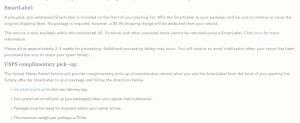
Every other Friday the Wishpond content team holds a meeting to come up with content ideas and titles for articles to be written over the following two weeks. Last week while brainstorming ideas and searching the web during our meeting, I started to fully appreciate the startlingly high percentage of content out there that’s presented in list format.
And more importantly I realized how many of these list posts were crap.
List posts have a bad reputation, and with good reason. So many of them are actually just regurgitated information stretched out into a thousand word article.
I guarantee that if you tried you could throw one together in minutes with 30 bullet points of shallow content. That’s the problem with list posts.
But at the same time, some list posts kick ass and provide you with solid content. So how can you create a list post that isn’t utter crap?
This article is going to show you. Yes, it is a list post, but that’s kinda the point. I promise you that it will provide you with valuable information that you can put into practice as soon as possible.
1, 2, 3, go!
1.) Condense Similar List Items Into Categories
Creating categories within your list is one way to break up the information for readers. You can even take this further and group similar categories into larger ones. This allows someone to easily find the information they want from that list post.
Let’s say you were running a contest and were looking for a prize to give away based on the season. You would put chocolates, flowers, and romantic vacations under Valentine’s Day giveaways. In fact my colleague Samantha Mykyte wrote an entire list post on contest prize ideas using holiday and seasonal categories:
2.) Give Actionable Tips That People Can Actually Use
It irks me when I read a list post that instructs readers to do something really awesome but doesn’t tell them how to do it.
For example, I often see authors say “Create amazing content/tweets/facebook posts etc” but then leave it at that. Well, of course everyone would love “amazing content” but you need to tell me the steps they can take to do that.
Instead give the tip and include a small side box or hyperlink that give examples of strategies your readers could actually implement today for their business. If you tell them to “Create amazing tweets” provide them with templates of different styles of tweets that are proven to engage.
3.) Create a “How-to” List Post
A list post is a great place to step-by-step show readers how to complete a task. In reality, many tasks require sequential instructions so a list post is the perfect way to explain the process to readers.
Write each step out in small, chunky paragraphs with bulleted lists and examples whenever possible. Here’s an example from our article, The Ebook Design Kit for Marketers who Can’t Design for S**t.
4.) Don’t Just Look for High Numbers
You know the posts I’m talking about – those list posts that contain information that everyone in that industry knows already or, even worse, those ones where they can categorize Facebook, Twitter, Google+, and LinkedIn into different marketing strategies simply because they want more points for their list.
Never write a list post with the goal of having the highest possible number in your title. The quality of each point is much more important than pure quantity.
5.) Ensure You Have a Goal for Your List Post
Don’t write a list post because it’s quick or because you need a piece of content at a moment’s notice. It’s pretty likely it will be boring, hard to read, and will leave your readers feeling like they just wasted 8 minutes of their day.
Instead, write a list post with a purpose.
Write a list post if it’s the most effective way to communicate your content to your readers.
Maybe you want it to be easy to digest or skim, or maybe it’s a guide they can keep and refer back to in the future. It is entirely possible for a list post to be more valuable than a long-form article.
The way you approach that post should be the same as any other. Start with an alluring introduction and ease them into your list.
6). Brainstorm and Cut
If you’re wondering what points to include in your list, write out all of the information swirling in your head. The more ideas you can come up with the better.
Then narrow it down into categories and cut those list items that don’t add value.
This ensures that only the strongest items make it onto your list, and that no two points are the same. Cut all those that act as filler or are unrelated to the topic.
Just remember that every single list item needs to be instrumental in adding value to that article, or it shouldn’t be mentioned.
7.) Write Example Articles
Possibly my favorite form of list post, an example list post showcases a strategy in different ways to reach out to different target audiences.
At Wishpond we love this kind of post. My colleague James Scherer’s post 13 Facebook Ads We Got that Were Right on the Money is the perfect example. This post took the topic of Facebook Ads and made it relevant to all of our readers by using very different examples from various industries.
If you’re talking about a general marketing strategy, it’s only relevant to all of your readers if there’s an example that fits their market so by including different examples you’re covering all your bases.
Conclusion
A list post comes in many forms. It could be a step-by-step plan, a checklist, a tip guide or a how-to post. Whatever the form, it needs to be worth reading until the very last word.
Have you written list posts in the past? What strategies do you find work the best to engage readers?
(223)




